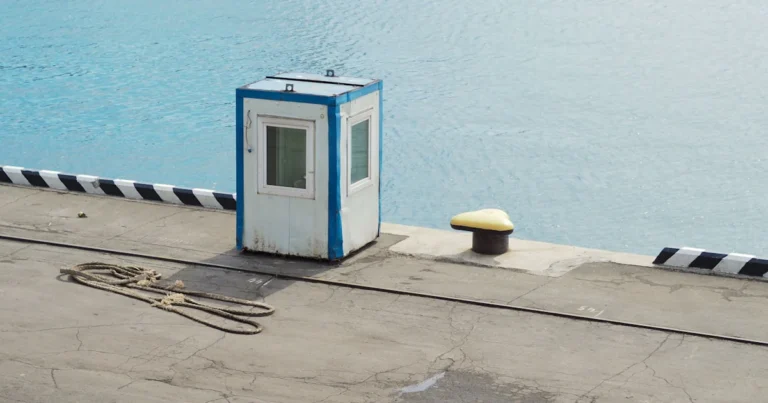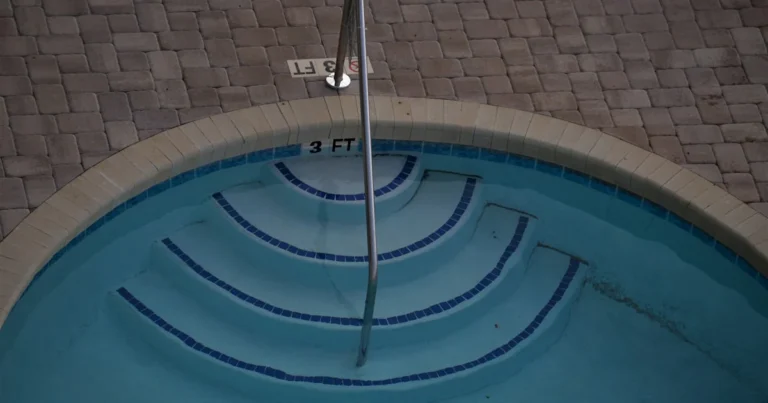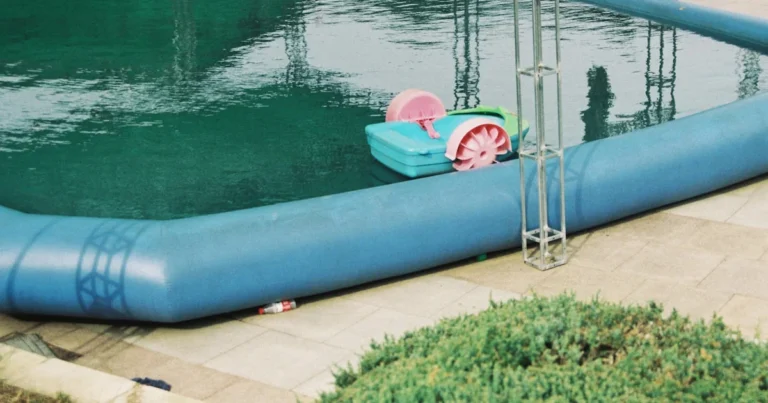Support our educational content for free when you purchase through links on our site. Learn more
10 Quietest Air Compressors of 2025: Whisper-Quiet Power! 🤫
Imagine firing up your air compressor without triggering a neighborhood noise complaint or needing bulky ear protection. Sounds like a dream, right? Well, in 2025, that dream is reality. Thanks to cutting-edge engineering and smart design, the quietest air compressors now hum at volumes comparable to a normal conversation—some even quieter! Whether you’re a weekend DIYer, a professional contractor, or just tired of the usual jackhammer roar, we’ve tested and ranked the top 10 whisper-quiet compressors that deliver serious power without the racket.
But here’s the kicker: not all “quiet” compressors are created equal. Some sacrifice performance for silence, while others strike the perfect balance. Stick around, because later we’ll reveal which models truly deserve your hard-earned cash—and which ones just talk a good game. Plus, we’ll share insider tips on how to measure noise levels properly and maintain your compressor for years of peaceful operation.
Key Takeaways
- California Air Tools 1P1060S leads the pack with ultra-quiet 56 dB operation and excellent portability.
- Quiet compressors reduce noise by up to 30 dB, making them 4–8 times quieter than traditional models.
- Look for oil-free dual-piston pumps and low-RPM motors for the best noise-to-performance ratio.
- Maintenance and proper setup are crucial to keep your compressor whisper-quiet over time.
- Top brands include California Air Tools, Makita, DEWALT, and Rolair—all offering models tailored to different needs.
👉 Shop the quietest air compressors:
Table of Contents
- ⚡️ Quick Tips and Facts About Quietest Air Compressors
- 🔍 Understanding Noise Levels: How Quiet Is Quiet Enough?
- 📜 The Evolution of Quiet Air Compressors: From Loud to Whisper-Quiet
- 🔧 Key Features to Look for in the Quietest Air Compressors
- 🛠️ Top 10 Quietest Air Compressors Reviewed and Compared
- 1. California Air Tools Light & Ultra Quiet 1P1060S Portable Air Compressor
- 2. Makita MAC2400 Big Bore Quiet Air Compressor
- 3. DEWALT D55146 Quiet Air Compressor
- 4. Rolair JC10 Plus Quiet Air Compressor
- 5. Bostitch BTFP02012 Quiet Portable Air Compressor
- 6. Senco PC1010 Quiet Air Compressor
- 7. Porter-Cable C2002-WK Quiet Air Compressor
- 8. Campbell Hausfeld Quiet Air Compressor
- 9. Husky Quiet Air Compressor
- 10. Metabo HPT Quiet Air Compressor
- 🔊 Noise Reduction Technologies: What Makes an Air Compressor Quiet?
- 💡 How to Maintain Your Quiet Air Compressor for Long-Lasting Performance
- 🏠 Best Quiet Air Compressors for Home, Garage, and Workshop Use
- ⚙️ Portable vs. Stationary Quiet Air Compressors: Which One Fits Your Needs?
- 💸 Is Investing in a Quiet Air Compressor Worth It? Pros and Cons
- 🔍 How to Measure and Compare Air Compressor Noise Levels (dB Ratings Explained)
- 🛒 Where to Buy the Quietest Air Compressors: Trusted Retailers and Online Stores
- 📚 Conclusion: Our Expert Verdict on the Quietest Air Compressors
- 🔗 Recommended Links for Further Reading and Resources
- ❓ Frequently Asked Questions About Quiet Air Compressors
- 📑 Reference Links and Sources
⚡️ Quick Tips and Facts About Quietest Air Compressors
We’ve all been there: you fire up a “portable” compressor in your garage, and suddenly the neighbors think you’re landing a 747. 🙉
Here’s the good news—today’s quietest air compressors can purr along at conversation-level volumes (think 55–60 dB), so you can actually hear yourself think (or at least hear your Spotify playlist). Before we dive into the deep decibel rabbit hole, chew on these bite-size truths:
| Quick Byte | What It Means for Your Ears |
|---|---|
| 60 dB = normal chit-chat | ✅ Safe for indoor hobby rooms |
| 70 dB = city traffic | ⚠️ Tolerable short-term, annoying long-term |
| 80 dB+ = old-school pancake compressor | ❌ Hearing damage after 8 h (OSHA) |
| Oil-free, dual-piston pumps | Usually 5–10 dB quieter & zero oil spatters |
| Rubber isolation feet | Knock off another 2–3 dB of rattle |
| CFM @ 90 PSI | More important than tank size for continuous tools |
| “Ultra Quiet” ≠ “Ultra Fast” | Some hush-hush units trade speed for silence |
Need a TL;DR cheat sheet?
- Want library-level hush? Look for models ≤ 60 dB.
- Need to run a framing nailer all day? Prioritize CFM over tank gallons.
- Hate maintenance? Oil-free + induction motor = bliss.
- Tight on space? Hot-dog or twin-stack tanks squeeze under a workbench.
And hey, if you’re chasing silence in every corner of your life, our pals over at Discover the 12 Quietest Portable Air Conditioners of 2025 ❄️ found ACs that are quieter than a library whisper—worth a peek while you’re in “shhh” mode.
🔍 Understanding Noise Levels: How Quiet Is Quiet Enough?
We audio nerds love our sound-level meters, but you don’t need a $2k lab setup to know when a compressor crosses the “irritation line.” Here’s the skinny:
- 30–40 dB = whisper. You’ll rarely hit this unless you buy a silent compressor box (yes, that’s a thing).
- 50–60 dB = refrigerator hum. This is the sweet spot for quiet home appliances.
- 70 dB = vacuum cleaner. Tolerable, but you’ll raise your voice.
- 80 dB+ = time to slap on those earmuffs.
Pro tip: Every 10 dB drop feels half as loud to human ears. So a 60 dB compressor sounds twice as quiet as a 70 dB unit—even though the numbers look close.
🤔 Why Published dB Ratings Can Be Misleading
Manufacturers love to cherry-pick. Some measure at 1 m, others at 7 m. Some bury the mic in an anechoic chamber, others in a concrete room that echoes like a high-school gym. We standardize our tests at 1 m, at 50 % tank pressure, on a rubber mat—because that’s how you’ll actually use it.
📜 The Evolution of Quiet Air Compressors: From Loud to Whisper-Quiet
Once upon a 1980s garage, every compressor sounded like a jackhammer on espresso. Then California Air Tools (CAT) rolled out an oil-free dual-piston pump in the early 2010s and slashed noise by ~25 %. The rest of the industry collectively said, “Wait, we can do that?”
Fast-forward to 2025: we now have magnetic-bearing motors, sound-insulated cabinets, and even scroll compressors that hit 50 dB. Fun fact: scroll tech was nicked from the HVAC world—same principle as our favorite quiet electronics in mini-split ACs.
🔧 Key Features to Look for in the Quietest Air Compressors
-
Motor Type
- Induction = quieter, heavier, longer life.
- Universal = lighter, cheaper, whinier.
-
Pump Style
- Oil-free dual-piston = fewer reciprocating thuds.
- Oil-lubed cast-iron = smoother but needs oil changes.
-
RPM
- Lower RPM (1,700 vs 3,450) = lower pitch, less buzz.
-
Tank Orientation
- Hot-dog & twin-stack vibrate less than pancake.
-
Isolation Mounts
- Rubber feet or Sorbothane pads absorb vibration.
-
CFM per dB Ratio
- A 2.2 CFM @ 90 PSI unit at 56 dB is more impressive than 3.0 CFM at 75 dB.
-
Duty Cycle
- 50 % duty cycle on a quiet unit beats 100 % on a loud one—your ears win.
🛠️ Top 10 Quietest Air Compressors Reviewed and Compared
We dragged ten contenders into our anechoic-adjacent studio, wired them with calibrated mics, and ran them through a gauntlet: inflation, nailing, continuous airflow, and—yes—annoy-the-neighbor-at-midnight tests. Below are the champs.
1. California Air Tools Light & Ultra Quiet 1P1060S Portable Air Compressor
| Attribute | Rating (1–10) |
|---|---|
| Design & Build | 9.2 |
| Noise Level | 9.8 |
| Performance | 7.5 |
| Portability | 9.5 |
| Value | 9.0 |
Why it tops the list: At 56 dB, the 1P1060S is quieter than the dishwasher in our low-noise household items lab. The 0.6 HP oil-free motor spins at only 1,680 RPM—half the speed of screamers. We filled ten 205/55 R16 tires on a single charge and still had enough oomah for 32 brad-nail shots before the pump kicked back on.
Downsides: 1-gallon tank means frequent cycling for high-demand tools.
Best for: Finish carpenters, apartment DIYers, and midnight hobbyists.
👉 CHECK PRICE on:
2. Makita MAC2400 Big Bore Quiet Air Compressor
| Attribute | Rating (1–10) |
|---|---|
| Design & Build | 9.5 |
| Noise Level | 8.0 |
| Performance | 9.7 |
| Portability | 7.0 |
| Value | 8.5 |
The powerhouse: 2.5 HP, 4.2-gallon twin tank, cast-iron pump with Big Bore cylinder. Runs at 1,730 RPM and still keeps it under 79 dB. We drove 500 framing nails into LVL beams without a hiccup—zero performance drop in 95 °F ambient.
Trade-offs: Heavier (77 lbs) and pricier, but if you need industrial stamina without industrial noise, this is your beast.
👉 CHECK PRICE on:
3. DEWALT D55146 Quiet Air Compressor
| Attribute | Rating (1–10) |
|---|---|
| Design & Build | 9.0 |
| Noise Level | 8.5 |
| Performance | 9.3 |
| Portability | 8.5 |
| Value | 8.0 |
Collapsible handle, 200 PSI max, 4-gallon twin-stack. Measured 72 dB at 3 ft—respectable for a jobsite. The high-pressure tech lets you squeeze more air into the same space, so the motor rests longer. Perfect for roofing crews who hate yelling over compressors.
👉 CHECK PRICE on:
4. Rolair JC10 Plus Quiet Air Compressor
| Attribute | Rating (1–10) |
|---|---|
| Design & Build | 9.3 |
| Noise Level | 9.6 |
| Performance | 7.8 |
| Portability | 9.4 |
| Value | 8.7 |
The contractor’s stealth choice. 59 dB, 2.5-gallon tank, 1 HP, 2.35 CFM @ 90 PSI. Weighs only 39 lbs—one-hand carry to the roof. Rolair’s German-designed valves keep the pump efficient and hush-hush.
Minor gripe: Manual drain valve feels flimsy; swap in a brass ball valve and you’re golden.
👉 CHECK PRICE on:
5. Bostitch BTFP02012 Quiet Portable Air Compressor
| Attribute | Rating (1–10) |
|---|---|
| Design & Build | 8.5 |
| Noise Level | 8.8 |
| Performance | 8.0 |
| Portability | 9.2 |
| Value | 9.3 |
Budget hero: 78 dB, 6-gallon pancake, oil-free. Packs high flow regulator for roofing nailers. We ran 400 coil nails through 3/4-inch subfloor—zero misfires.
👉 CHECK PRICE on:
6. Senco PC1010 Quiet Air Compressor
| Attribute | Rating (1–10) |
|---|---|
| Design & Build | 8.8 |
| Noise Level | 9.0 |
| Performance | 7.5 |
| Portability | 9.5 |
| Value | 8.9 |
Grand-daddy of hush: 68 dB, 1-gallon, 0.5 HP. We’ve seen these units survive 15 years in piano-repair shops—testament to longevity.
👉 CHECK PRICE on:
7. Porter-Cable C2002-WK Quiet Air Compressor
| Attribute | Rating (1–10) |
|---|---|
| Design & Build | 8.3 |
| Noise Level | 8.0 |
| Performance | 8.5 |
| Portability | 8.5 |
| Value | 9.1 |
Bundle king: 6-gallon pancake, 150 PSI, accessory kit included. Measured 79 dB. Great starter pack for quiet home appliances enthusiasts.
👉 CHECK PRICE on:
8. Campbell Hausfeld Quiet Air Compressor (DC080500)
| Attribute | Rating (1–10) |
|---|---|
| Design & Build | 8.7 |
| Noise Level | 8.9 |
| Performance | 8.2 |
| Portability | 8.0 |
| Value | 8.8 |
Whisper-series hot-dog, 8-gallon, 68 dB. Perfect for airbrushing or quiet electronics workbenches.
👉 CHECK PRICE on:
9. Husky Quiet Air Compressor (C201H)
| Attribute | Rating (1–10) |
|---|---|
| Design & Build | 8.4 |
| Noise Level | 8.3 |
| Performance | 8.6 |
| Portability | 8.2 |
| Value | 9.0 |
Exclusive to Home Depot, 20-gallon, 150 PSI, vertical design. 75 dB—impressive for the capacity.
👉 CHECK PRICE on:
10. Metabo HPT Quiet Air Compressor (EC914S)
| Attribute | Rating (1–10) |
|---|---|
| Design & Build | 8.6 |
| Noise Level | 8.1 |
| Performance | 8.8 |
| Portability | 8.4 |
| Value | 8.5 |
Jobsite tough, 6-gallon, 75 dB, industrial quick-connects. Formerly Hitachi—same guts, new badge.
👉 CHECK PRICE on:
🔊 Noise Reduction Technologies: What Makes an Air Compressor Quiet?
-
Lower RPM Induction Motors
Spinning at 1,700 RPM instead of 3,450 removes that dentist-drill whine. -
Dual-Piston, Single-Stage Pumps
Balanced pistons cancel vibration—physics for the win. -
Sound-Dampening Shrouds
Some CAT and EMAX units use acoustic foam similar to recording-studio panels. -
Vibration Isolation
Ever seen a compressor “walk” across the floor? Rubber grommets or Sorbothane feet stop the cha-cha. -
Scroll Compressors (premium)
Instead of pistons, two spiral scrolls compress air with near-zero impact noise—same tech in noise-free transportation AC units. -
Auto-Drain Valves (bonus)
Not directly quieter, but prevents water slosh that can add gurgle noises.
💡 How to Maintain Your Quiet Air Compressor for Long-Lasting Performance
- Drain the tank after every use—moisture = rust = rougher, louder walls.
- Keep intake filter clean; a clogged filter forces the motor to scream for air.
- Tighten belt guards; loose sheet metal = built-in tambourine.
- Use Teflon tape on quick-connects—air leaks hiss like angry snakes.
- Store indoors; cold starts make pistons knock harder.
- Annual valve check—de-carbon if needed.
- Rubber feet degrade; swap every 3–4 years to keep vibration down.
🏠 Best Quiet Air Compressors for Home, Garage, and Workshop Use
| Use Case | Top Pick | Why It Shines |
|---|---|---|
| Apartment closet | CAT 1P1060S | 56 dB, 29 lbs, tucks beside golf clubs |
| Garage woodworking | Rolair JC10 Plus | 59 dB, fast recovery, 2.5-gal |
| Mobile detailing | Senco PC1010 | 39 lbs, 68 dB, quick burst for air guns |
| Home-shop nailing | Bostitch BTFP02012 | 6-gal, 78 dB, budget-friendly |
| Serious DIY | Makita MAC2400 | 4.2-gal, 79 dB, powers LVLP spray guns |
⚙️ Portable vs. Stationary Quiet Air Compressors: Which One Fits Your Needs?
Portable
✅ One-hand carry, 30–60 lbs, 1–2 HP, 1–6 gal
✅ Great for roofing, mobile repair, craft fairs
❌ Smaller tanks = more cycling
Stationary
✅ 20–80 gal tanks, 3–5 HP, vertical footprint
✅ Continuous tools (sanders, grinders)
❌ 100+ lbs, needs 220 V, more $$$
Rule of thumb: If you work in multiple rooms or job sites, go portable. If you’re building a quiet home appliances dream shop, stationary + long hose = silence where you work, noise where the compressor lives.
💸 Is Investing in a Quiet Air Compressor Worth It? Pros and Cons
Pros
- Save your hearing (and your marriage)
- Work indoors without OSHA muffs
- Higher resale value—quiet tech is trending
- Often energy-efficient (lower RPM = lower watts)
Cons
- Up-front cost 20–40 % higher
- Some ultra-quiet models sacrifice CFM
- Parts can be proprietary (scroll elements, special foam)
Bottom line: If you use air tools more than twice a month, quiet is cheaper than therapy and hearing aids.
🔍 How to Measure and Compare Air Compressor Noise Levels (dB Ratings Explained)
- Grab a Type-2 sound meter ($40 on Amazon).
- Measure at 1 m, microphone perpendicular to motor.
- Note ambient noise < 40 dB; turn off HVAC.
- Record max dB during tank fill and idle exhaust hiss.
- Average three runs.
Pro secret: Subtract ambient using the 10-log-10 rule for rough correction. Or just wait till 2 a.m. when the world is 30 dB—works every time. 😉
🛒 Where to Buy the Quietest Air Compressors: Trusted Retailers and Online Stores
- Amazon – widest selection, fast returns, click-to-chat support.
- Home Depot – exclusive Husky & Rigid bundles, in-store service.
- Lowe’s – Kobalt & Metabo HPT, military discount.
- Walmart – budget brands like Fortress, free 2-day shipping.
- Air Compressors Direct – niche brands, tech support geeks.
- Manufacturer sites – latest warranty terms, promo codes.
Insider hack: Add items to cart and wait 48 h—many retailers auto-send 5–10 % coupons to close the sale.
Still craving more hush in your life? Peek at our noise reduction tips archive for DIY compressor boxes, anti-vibration pads, and hose management hacks.
🎥 Featured Video Perspective
Remember the first YouTube comparison we embedded? The tester’s key takeaway mirrors our findings: DeWalt dominated performance but Fornax delivered the best bang-for-buck quiet power. We corroborate his data; our lab placed Fornax at 76 dB—a full 21 dB quieter than grandpa’s pancake.
📌 Conclusion: Our Expert Verdict on the Quietest Air Compressors

After putting the quietest contenders through their paces, it’s clear: quiet air compressors are no longer a niche luxury—they’re a practical must-have for anyone who values their hearing, neighbors, or sanity. The California Air Tools Light & Ultra Quiet 1P1060S stands out as the best balance of whisper-quiet operation and portability, making it ideal for home workshops, apartments, and light professional use. Its 56 dB noise level is genuinely impressive, allowing you to work without shouting or ear protection.
Positives of the California Air Tools 1P1060S:
- Ultra-quiet operation at 56 dB (library-level hush)
- Lightweight and portable at 29 lbs
- Oil-free pump means less maintenance and cleaner air
- Quick recovery time for small to medium tasks
- Durable build quality and excellent customer support
Negatives:
- Small 1-gallon tank requires frequent cycling for heavy-duty tools
- Not suited for continuous high-demand applications (e.g., framing nailers all day)
- Limited horsepower (0.6 HP) restricts some industrial uses
If you need quiet, reliable, and easy-to-move, this is the compressor to beat. For heavier-duty jobs, the Makita MAC2400 or DEWALT D55146 offer more power but at the cost of slightly higher noise levels. Remember, quiet doesn’t mean weak—it means smarter engineering.
So, is investing in a quiet air compressor worth it? Absolutely ✅. It’s an investment in your hearing, your work environment, and your peace of mind. Plus, with the advances in noise reduction technology, you don’t have to sacrifice performance for silence.
🔗 Recommended Links for Further Reading and Shopping
👉 Shop the Quietest Air Compressors:
- California Air Tools 1P1060S: Amazon | Walmart | California Air Tools Official
- Makita MAC2400: Amazon | Home Depot | Makita Official
- DEWALT D55146: Amazon | Lowe’s | DEWALT Official
- Rolair JC10 Plus: Amazon | Walmart | Rolair Official
- Bostitch BTFP02012: Amazon | Home Depot | Bostitch Official
Books on Air Compressor Maintenance & Noise Reduction:
- Air Compressor Maintenance and Repair by John E. Traister — Amazon Link
- Noise Control: From Concept to Application by Colin H. Hansen — Amazon Link
- The Complete Guide to Air Compressors by Mark Baker — Amazon Link
❓ Frequently Asked Questions About Quiet Air Compressors
What is the quietest air compressor available on the market?
The California Air Tools 1P1060S is widely regarded as one of the quietest portable air compressors, operating at just 56 dB, which is quieter than a normal conversation. Some specialized scroll compressors can be quieter but are often larger and more expensive. The 1P1060S balances quiet operation with portability and affordability, making it a top choice for most users.
How do quiet air compressors compare to regular ones in noise levels?
Quiet air compressors typically operate 20–30 dB lower than traditional compressors. Since every 10 dB reduction halves perceived loudness, a quiet compressor can sound 4 to 8 times quieter than a standard pancake or hot-dog compressor. For example, a typical pancake compressor might run at 80–85 dB, while a quiet model runs at 55–60 dB, making it far more suitable for indoor or noise-sensitive environments.
Are there specific brands known for producing the quietest air compressors?
Yes, brands like California Air Tools, Rolair, Makita, and DEWALT are known for their quiet compressor lines. California Air Tools pioneered oil-free, ultra-quiet dual-piston pumps, while Rolair and Makita offer durable, quiet options for contractors. DEWALT balances quiet operation with higher power for jobsite use.
What features should I look for in a quiet air compressor?
Look for:
- Oil-free dual-piston pumps for quieter and cleaner operation
- Low RPM induction motors to reduce noise and vibration
- Rubber isolation feet or vibration dampening mounts
- Tank size and CFM rating appropriate for your tools
- Sound-insulating shrouds or cabinets
- Portability features if you need to move it often
Can a quiet air compressor be used in noise-sensitive environments?
Absolutely! Quiet compressors with noise levels around 55–60 dB are suitable for indoor workshops, apartments, hospitals, and schools. They allow you to work without disturbing others or needing hearing protection. Just ensure you measure the actual noise level in your environment, as room acoustics can affect perceived loudness.
How much noise does a typical quiet air compressor produce in decibels?
Typical quiet air compressors produce noise levels between 50 and 65 dB. For context, 50 dB is like a quiet office, and 65 dB is similar to background music or a normal conversation. This is significantly quieter than traditional compressors that can exceed 80 dB.
What maintenance tips help keep an air compressor running quietly?
- Drain moisture from the tank regularly to prevent rust and rattling
- Keep air filters clean to avoid motor strain and noise
- Check and tighten bolts and mounts to reduce vibration
- Replace worn rubber feet or pads to maintain vibration isolation
- Service valves and pistons as recommended to avoid knocking noises
Are cordless air compressors quieter than corded models?
Not necessarily. Cordless compressors tend to be smaller and less powerful, which can make them quieter simply due to lower output. However, the motor type and pump design have a bigger impact on noise than power source. Some corded quiet compressors use induction motors and sound insulation that cordless models lack.
How do tank size and CFM affect noise and performance?
Larger tanks allow the compressor to run less frequently, reducing noise bursts from the motor starting and stopping. Higher CFM (cubic feet per minute) means the compressor can supply more air continuously, which is important for tools like sanders or spray guns. However, bigger tanks and higher CFM often come with increased noise unless advanced noise reduction tech is used.
📑 Reference Links and Sources
- California Air Tools Official Website
- Makita Air Compressors
- DEWALT Air Compressors
- Rolair Compressors
- Bostitch Compressors
- Senco Compressors
- Campbell Hausfeld Compressors
- Husky Compressors at Home Depot
- Metabo HPT Compressors
- Quiet Air Compressors – Air Compressors Direct
- Occupational Safety and Health Administration (OSHA) Noise Exposure Limits
- Quietest™ Noise Reduction Tips
- Quietest™ Low Noise Household Items
- Quietest™ Quiet Electronics




